Have you ever heard about the Twelve-wired Bird-of-Paradise? It is scientifically known as Seleucidis melanoleucus.
This bird derived its name from the Latin word, Seleucidis, which means god-sent migratory birds to destroy or combat locusts. Melanoleuca on the other hand means black and white.
Featured in this article are both its male and female birds. You will find out their differences when you browse through the photos.
Noticeably different from its female breed, the adult male’s upper parts including its head has velvety black color. Its lower breast feathers are green-tipped.
The male breed’s flank flumes and underpants are colored bright yellow. Interestingly, this yellow color fades after death.
Meanwhile, the adult female’s underparts have uniformed black bars. Both 𝓈ℯ𝓍es exhibit similarities though in some of their body parts like the eyes, feet, and legs, which are both pinkish.
In body size, the females are way bigger. Females grow to about 35 centimeters. while males, around 33 centimeters.
They thrive in swampy forests areas as well as flat lowlands and feed on nectar, insects, frogs, arthropods, and fruits.
These species live in abundant numbers so that means they have not been considered to be among those nearing extinction.
If you want to know more about this interesting bird, then keep on reading and check the photos below.
These are male and female twelve-wired bird-of-paradise.
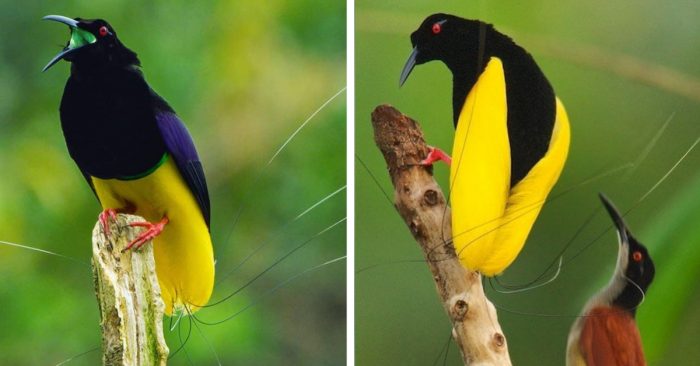
A closer look at the male twelve-wired bird-of-paradise.
As said, the adult male’s upper parts including its head have velvety black color. Its lower breast feathers are green-tipped.
Its flank flumes and underpants are colored bright yellow. Interestingly, this yellow color fades after death.
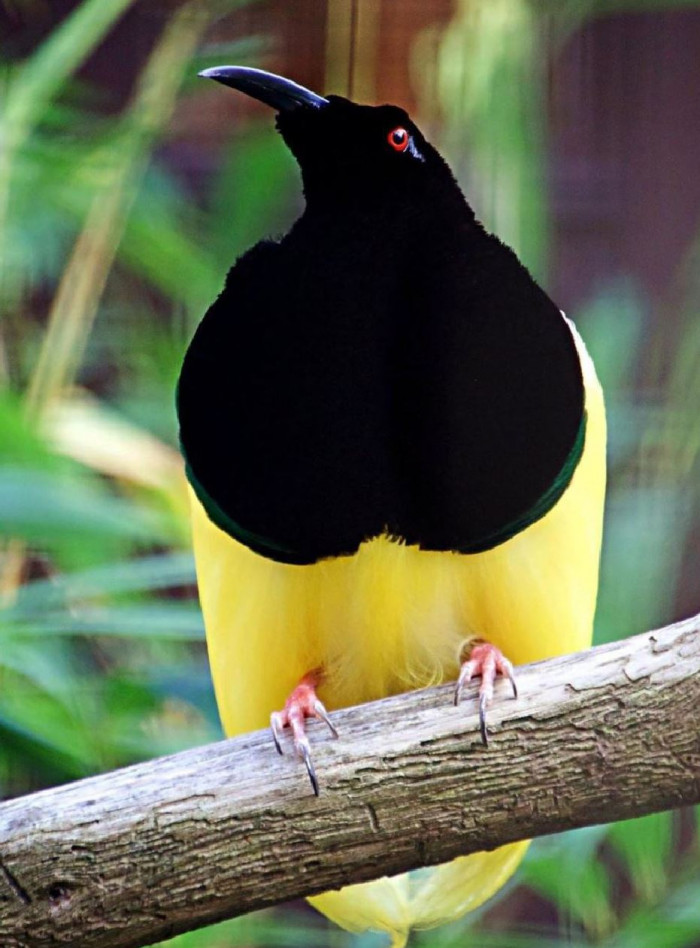
Meet its female counterpart.
The female twelve-wired bird-of-paradise can be distinguished from its male with its color. On its upper part, it is mostly brown and its underparts have uniformed black bars.
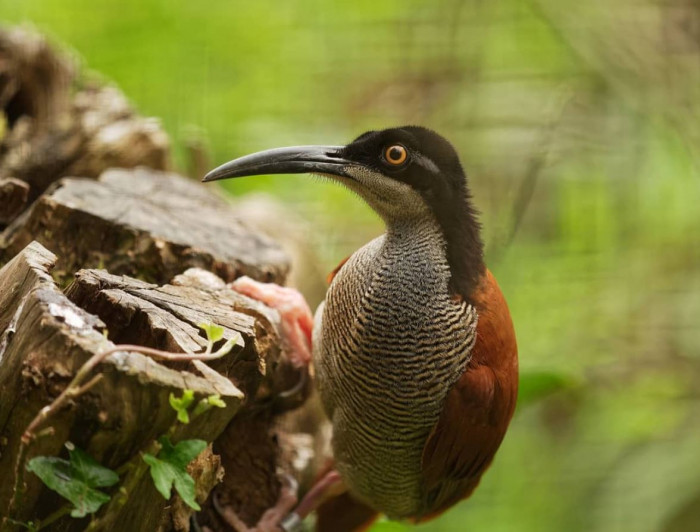
Showing off its twelve blackish, wire-like filaments.
Emerging from the rear of these plumes are twelve wire-like filaments that are black in color. These bends back toward their bases sweeping forward over their hindquarters.

Males are highly territorial.
He sees to it that he is at least 700 meters away from the other male within a given area.
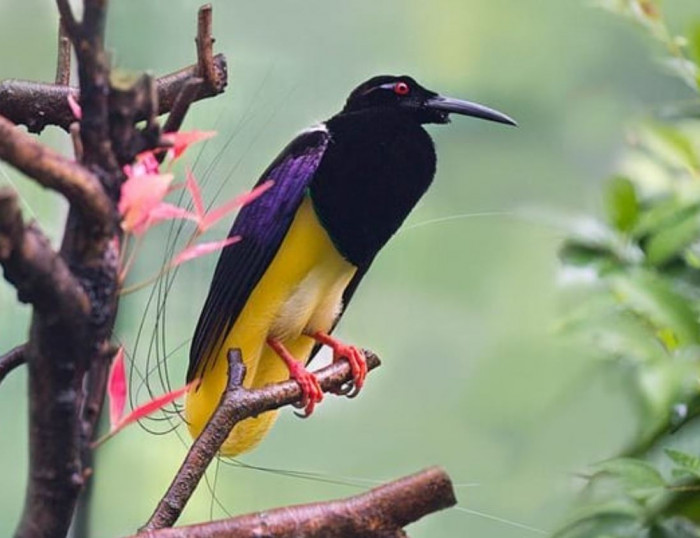
Habitat.
These birds can be found in the lowland rainforests of Papua New Guinea including the neighboring island of Salawait, Indonesia. They thrive in swampy forests areas as well as flat lowlands.

Male displaying himself at traditional perches.
Here’s a male on a tree stump to attract the opposite 𝓈ℯ𝓍.
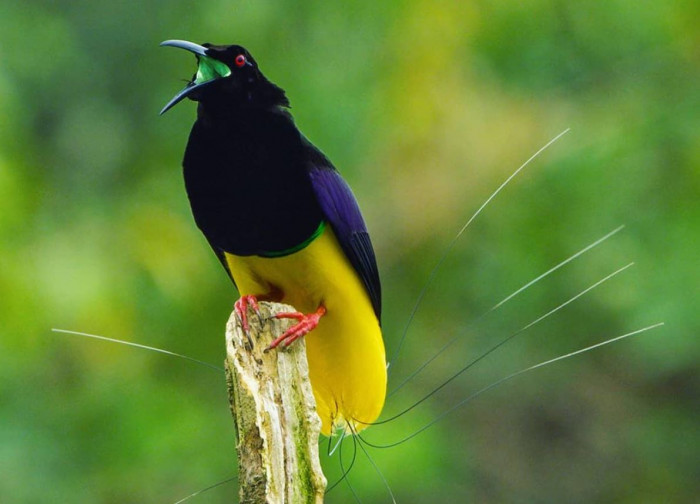
They are 𝓈ℯ𝓍ually dimorphic.
Being 𝓈ℯ𝓍ually dimorphic means that the males are different from the females in terms of color, structure, or size. As you have seen the differences in the two 𝓈ℯ𝓍es, then it is obvious that this kind of species is 𝓈ℯ𝓍ually dimorphic though both have strong pink feet and large claws.

What about breeding?
These birds are polygamous. Nesting takes 20 days and it is the female that attends and builds the nest by herself.
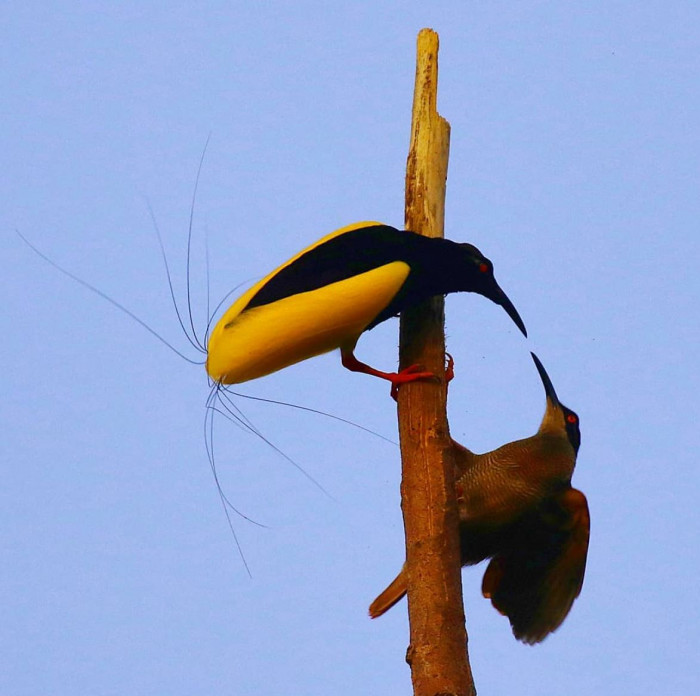
If you want to listen to this unique bird, then check this video:
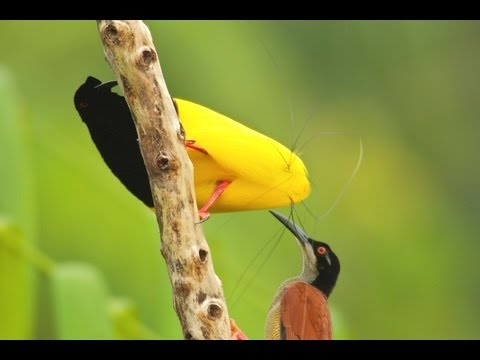
Indeed, this bird is truly unique — a living proof that all beings were created uniquely by our Creator. We may have the slightest chance of having a close encounter with this bird, but seeing the photos and watching the video gives us ample information about this breed.
Share this article so others will get to know about the twelve-wired bird-of-paradise too.





